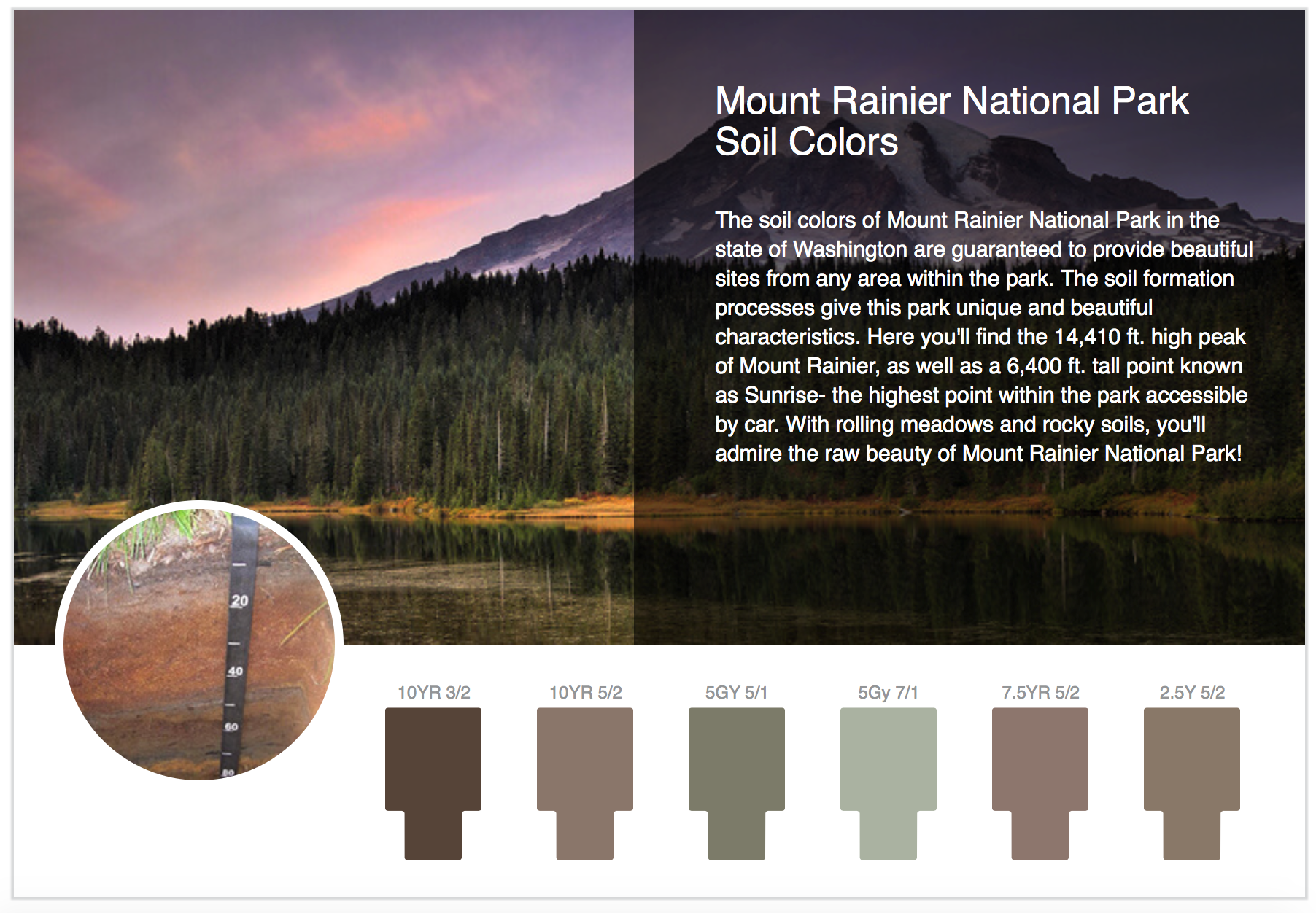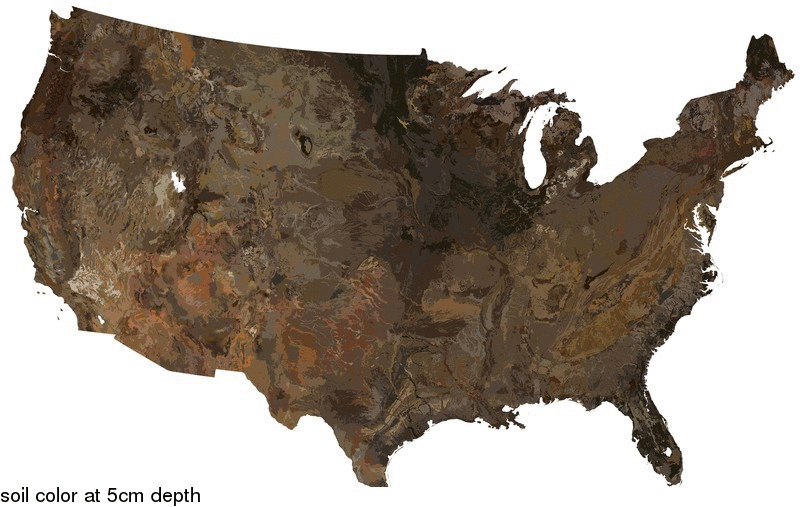Those who have worked with soils are familiar with the Munsell system for measuring/assessing soil color, and with the many environmental clues soil color can give us. Now the Munsell company that produces the soil color chips, charts, and books we use in the field and lab has produced a fascinating and visually exciting celebration of soil and its colors, based on the centennial of the U.S. National Park system.
From Munsell's announcement:
The Soil Colors of the National Parks - 100 Years of Conservation & Soil Science
August 25th, 2016 marked the 100 year anniversary of the National Park Service in the United States. In celebration of this historic event, we continue the efforts of others to drawn attention to the importance soil plays in the vitality of these parks. By showcasing the beautiful soil colors of the parks, we can better understand and appreciate the soils surrounding us. Soil color is not just an indicator of the makeup of the soil in a certain region, it can also help to indicate what the soil can be used for, whether it be for food production, maintaining, restoring or rebuilding ecosystems, conserving and promoting biodiversity, viability for water systems, classification of artefacts and more. Soil is the often overlooked “skin of the earth,” so let us “dig” deep and discover.
Read more: http://munsell.com/color-blog/soil-colors-national-parks-anniversary/
Among other things, the site has several examples from national parks, such as this one from Mt. Ranier:

Munsell's site also shows a great graphic of the geographical variations in soil color in the conterminous U.S.A., produced by the U.S. Department of Agriculture's National Soil Survey Center. It incorporates soil color observations over decades of field work to show the patterns of variation at various depths. Check out the site for some geographical interpretation of the patterns shown.

